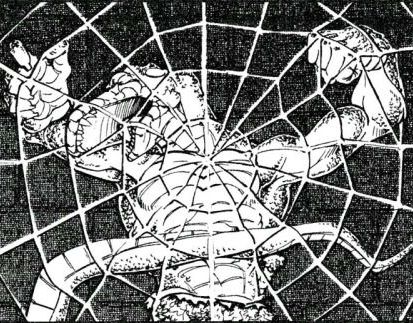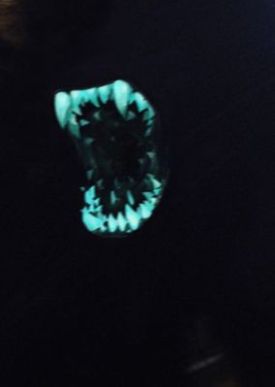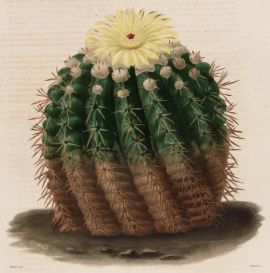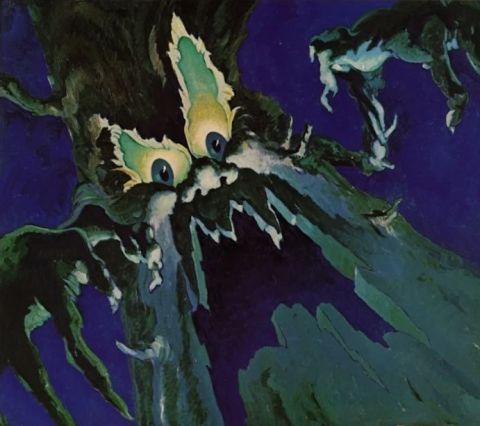Magical Enervation & Invigoration

Recently, Matt Jackson had a thought about magic in Old School games. “If magic is to be powerful, magic should be dangerous, have consequences, and not always just be perfect,” Jackson wrote. Seems reasonable to me. Then, for some reason, I thought of Fate Dice. If you’re not familiar with Fate Dice, they’re like normal dice, but instead of numbers, their sides are either blank (equal to zero) or else are marked by a plus sign (equal to +1) or a minus sign (equal to -1).
When playing Fate (which you should do at least a few times because it’s a hoot), you roll four Fate Dice (4DF) and total the sides. About 23% of the time, you’ll end up with a zero. About 20% of the time, you end up with a +1, and another 20% of the time you get a -1. You end up with a +2 or -2 about 12% of the time, respectively; +3 or -3 about 5% of time, respectively; and +4 or -4 about 1% of the time.
Enough explanation. Back to Matt Jackson’s observation about magic. Imagine, if you will, a spellcaster, Zot the Wondrous, a 4th-level magic-user.
Confronted by charging lizardmen in a dark, humid cavern, Zot casts web. Zot’s web normally has a range of 2″ and lasts for 8 turns. Zot’s player picks a center point for the spell, hoping it ends up in the middle of the lizardmen. He then rolls 4DF, and gets a -1 total. The web goes into effect as if Zot was a 3rd-level magic-user. The caster’s desired center point for the spell ends up 1/2″ closer than expected, and the web lasts for 6 turns instead of 8. Later, Zot casts magic missile at a gelatinous cube. The player rolls 4DF, and gets a +2. Zot’s magic missile goes into effect as he were a 6th-level magic-user, which means he fires three missiles instead of two.
These increases or decreases to effective casting level can change the odds of the caster overcoming magic resistance. Normally, Zot’s caster level boosts a magically resistant monster’s magic resistance by 35%. If he had cast magic missile at a creature with magic resistance instead of a gelatinous cube, the monster’s magic resistance would have been boosted by only 25% instead of 35% because of the +2 increase to Zot’s caster level. What’s more, increases or decreases to caster level also change the spell’s effective level. In other words, Zot’s web against the gnolls would be treated as 1st-level spell and his magic missile against the cube would have been equal to a 3rd-level spell (a level of spell Zot would not normally be able to cast as a 4th-level magic-user).
Magical Enervation
When Zot’s spells take effect at a lower casting level, it is because of magical enervation. The ebb and flow of magical energies is somewhat unpredictable, and spells often end up at least slightly weaker. If a spell’s adjusted spell level ever equals zero or lower, then the caster does not lose memorization of the spell. For example, if Zot’s web had gone into effect as a 0-level spell, Zot would have not lost memorization of web after casting.
Magical Invigoration
When a spell takes effect at a higher level than normal, the caster experiences magical invigoration. Furthermore, if the spell’s effective level increases to a level the caster cannot normally access (as happened to Zot when he cast that magic missile), the caster must make a saving throw versus spell to avoid being stunned a number of rounds equal to the number of levels of increase applied to the spell. Thus, Zot would have to make that saving throw versus spell to avoid being stunned. If he makes the saving throw, Zot isn’t stunned, and he loses memorization of magic missile as normal. If Zot fails the save, he is stunned for two rounds, but the surge of magical energies burns the spell back into his memory; therefore, Zot does not lose memorization of magic missile.




